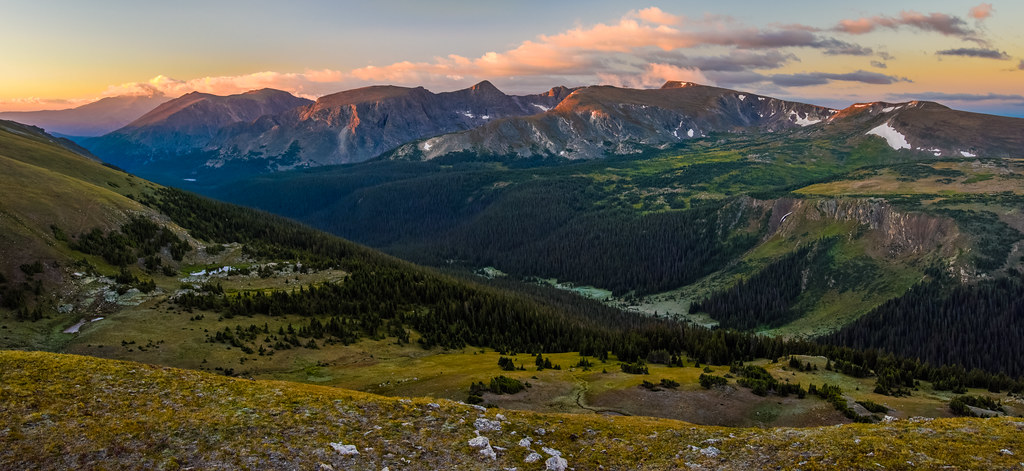
With a staggering 63 U.S. national parks spread across an incredible array of ecosystems, the opportunities for outdoor adventure in America are truly endless. Yet, despite this vastness, a significant portion of visitors continue to flock to the same iconic, well-trodden paths. In 2024, a striking statistic revealed that over 50 percent of all recreational visits to a national park were concentrated within just the top 10 most visited sites, including giants like Great Smoky Mountains, Zion, and Grand Canyon.
While these popular parks undoubtedly hold their own unique allure and are celebrated for good reason, a growing concern among travelers is the issue of overtourism. The increasing crowds, the inevitable traffic, and the often-frustrating need to reserve campsites as much as a year in advance can detract from the serene, immersive experience many seek when venturing into the wilderness. This trend highlights a compelling argument for looking beyond the usual suspects and discovering the hidden gems that the National Park System so generously offers.
For those of us who are card-carrying members of the national parks-obsessed club, but who yearn for a more authentic, less congested encounter with nature, the solution lies in exploring the underrated. These parks, whether lesser-known, more remote, or simply overshadowed by their famous neighbors, promise equally breathtaking landscapes, unique ecological wonders, and a chance to truly connect with America’s spectacular public lands. Prepare to ignite your sense of wanderlust as we delve into some of the nation’s most overlooked, yet utterly captivating, national parks.

1. **Wrangell–St. Elias National Park & Preserve**
Venturing into the Alaskan wilderness reveals a true titan among national parks: Wrangell–St. Elias. This colossal preserve spans an astounding 13 million acres, making it the largest U.S. national park by a considerable margin. To put its sheer scale into perspective, this single park is larger than Yellowstone National Park, Yosemite National Park, and Switzerland combined, offering an unparalleled expanse of untouched arctic beauty.
Despite its grandeur, Wrangell–St. Elias remains largely unexplored, with Alaska’s eight national parks collectively accounting for less than two percent of all U.S. national park visits in 2024. Most of those few visitors tend to head to Denali, Glacier Bay, and Kenai Fjords, leaving Wrangell–St. Elias a serene sanctuary for the truly adventurous. Those who brave the journey are rewarded with a rare chance to immerse themselves in a vast and diverse array of wilderness.
Highlights within this immense landscape are nothing short of spectacular. It boasts several of the highest peaks in the nation, including the formidable 18,008-foot-tall Mount St. Elias. Expansive ice fields and colossal glaciers, such as the 53-mile-long Nabesna Glacier, carve dramatic scenery, while Mount Wrangell, an active volcano that has emitted smoke several times in recent decades, adds a touch of raw, geological power. The park’s incredible size and varied terrain present endless possibilities for exploration, from challenging hikes and technical climbing to thrilling rafting excursions and peaceful fishing spots.
**How to visit:** Accessing this remote wonderland requires a bit of planning. Most visitors opt to drive the 60-mile-long, unpaved McCarthy Road from Chitina, an adventure in itself. Alternatively, Wrangell Mountain Air provides three daily flights into the park during the summer months, offering a quicker and equally scenic route. Once inside, for a truly immersive experience, consider staying a few nights at the Ultima Thule Lodge.
Guests at Ultima Thule Lodge enjoy exclusive access to daily fly-out adventures on small prop planes. This unique offering allows them to reach and explore otherwise hard-to-access corners of the park, providing an unparalleled opportunity to witness the park’s untouched beauty from a different perspective and delve deeper into its expansive wilderness.
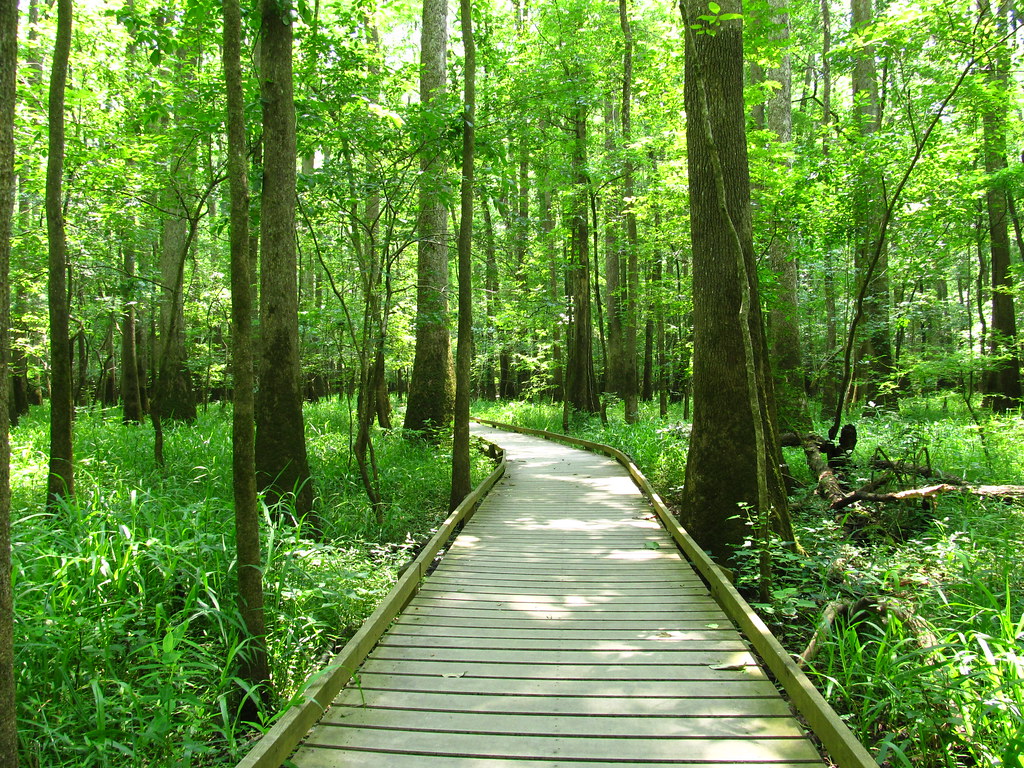
2. **Congaree National Park**
Nestled in the heart of South Carolina, Congaree National Park is a sanctuary of unparalleled natural beauty, primarily celebrated for its remarkable collection of old-growth, bottomland hardwood trees. Stepping into Congaree feels like entering a living cathedral, where colossal trees draped in ethereal Spanish moss create a dense green canopy overhead. Sunlight filters through the leaves in shimmering shafts, casting a magical glow, while the air resonates with the rhythmic hum of cicadas, crafting an immersive and almost otherworldly atmosphere.
This unique ecosystem is defined by its seasonal flooding, a natural cycle that transforms the park into a dreamy, swampy world. One of the most enchanting ways to experience this aquatic landscape is by embarking on a guided tour down the Cedar Creek canoe trail. Paddling through the inundated forest offers a perspective few parks can provide, allowing you to glide silently among towering ancient trees and observe the subtle movements of the swamp’s inhabitants.
Congaree is also a premier destination for wildlife enthusiasts, particularly in the Southeast. It’s one of the best places to spot the elusive barred owl and the playful river otter. In late spring, between mid-May and mid-June, the park becomes home to a truly surreal spectacle: synchronous fireflies. These tiny bioluminescent insects light up the woods in unison, creating a dazzling, synchronized display that must be seen to be believed. However, a word of caution for potential visitors: as the park is situated on a floodplain fed by the Congaree and Wateree rivers, it can become quite swampy and, consequently, very buggy with mosquitoes during the warmer months. For the most comfortable and enjoyable visit, spring and fall are highly recommended.
**How to visit:** Conveniently located two hours from Charleston and just half an hour from Columbia, South Carolina, Congaree National Park is easily accessible for either a day trip or a relaxing weekend getaway from either city. For those wishing to extend their stay and fully immerse themselves in the park’s tranquility, reservations can be made at one of its two front-country campgrounds: Longleaf Campground and Bluff Campground. These facilities offer a chance to wake up surrounded by the serene beauty of the old-growth forest.
Read more about: Beyond the Grand Canyon: 14 Underrated National Parks You Need to Visit Right Now
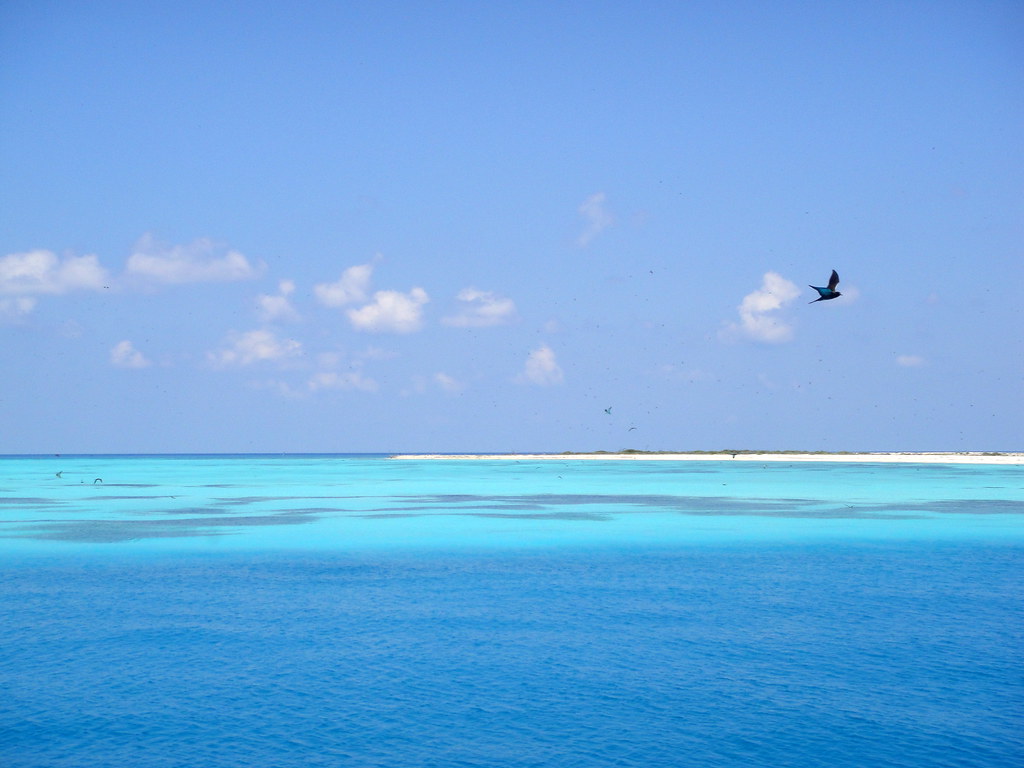
3. **Dry Tortugas National Park**
Seventy miles offshore from Key West, deep in the emerald waters of the Gulf of Mexico, lies Dry Tortugas National Park. This extraordinary destination is often overshadowed by Florida’s more well-known and easily accessible Everglades National Park, yet it offers a completely distinct and equally captivating experience. Dry Tortugas is a marine-centric paradise, consisting primarily of open water, vibrant coral reefs, and seven small, pristine islands.
At the heart of its attractions is an abundance of diverse marine life, making it a dream destination for underwater exploration. Visitors can delve into its unique beauty by donning a snorkel mask, exploring its depths as a diver, or paddling through its clear waters in a kayak. Beyond the natural wonders, the park also offers a fascinating glimpse into history, with opportunities to learn about the storied past of Fort Jefferson, an impressive masonry fort built in the 1800s on Garden Key.
For the select few who choose to spend the night and camp on the remote islands, a truly magical experience awaits. The sheer remoteness of Dry Tortugas provides incredible stargazing opportunities, far from any light pollution. Moreover, once the day-trippers have returned to shore, campers are treated to afternoons of crowd-free swims, offering a profound sense of solitude and connection with this isolated maritime sanctuary.
**How to visit:** The most straightforward way to reach Dry Tortugas National Park is via the Yankee Freedom ferry, which departs daily from Key West at 8 a.m. Day trips with the ferry are priced at $235 per adult, providing a comprehensive experience. For those aspiring to camp overnight, a round-trip ferry ride combined with a camping pass costs $240. Camping is indeed the only way to spend the night on the islands, and it is imperative to secure a reservation in advance due to limited availability. It is also highly advisable to book your ferry ticket several weeks, or even months, ahead of your planned trip, especially if you intend to camp, as spots fill up quickly for this coveted destination.
Read more about: My Florida Life: Seven Years, Endless Surprises, and the Unforgettable Experiences That Changed Everything
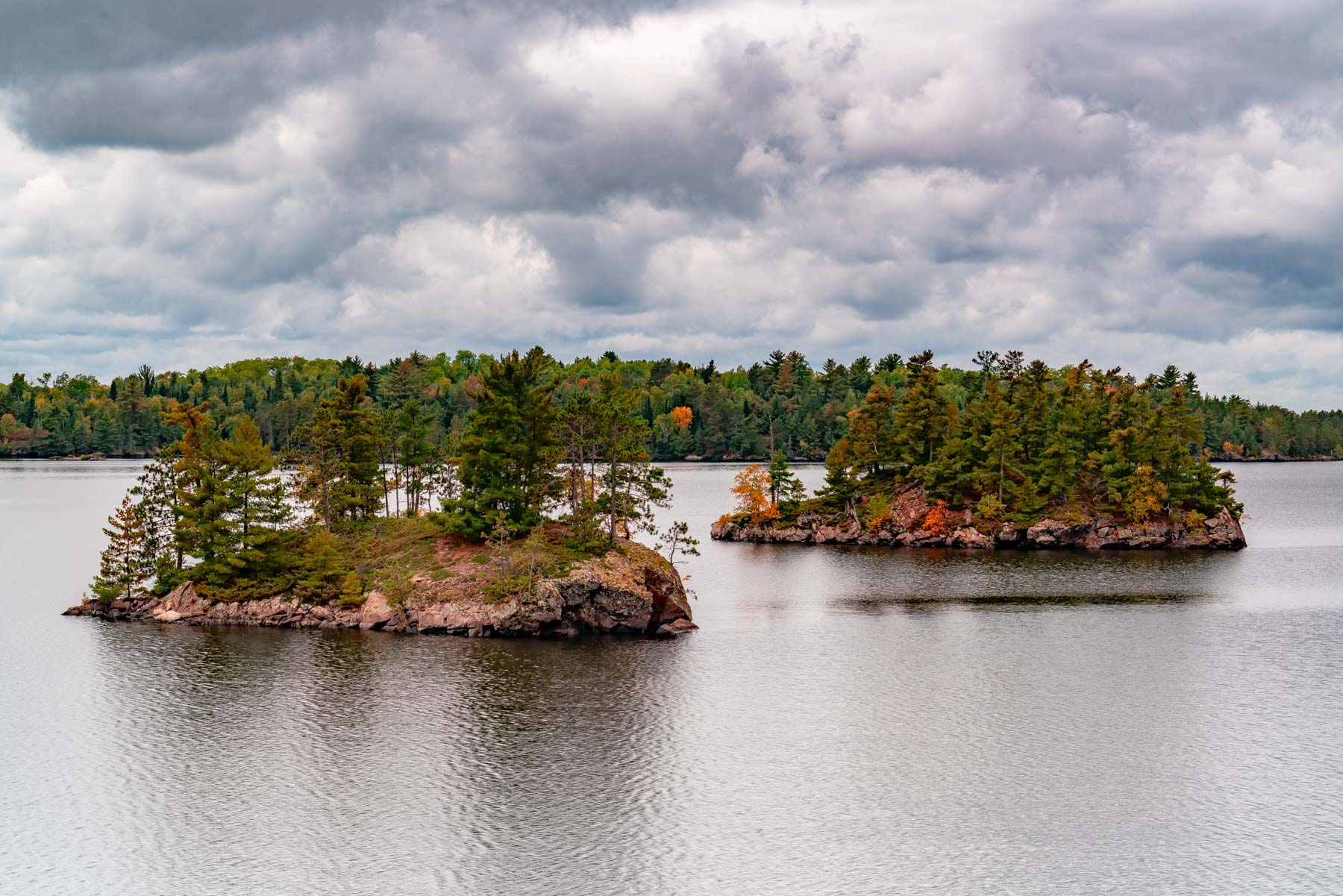
4. **Voyageurs National Park**
Stretching along the Canadian border in northern Minnesota, Voyageurs National Park is a captivating wonderland that, despite its immense appeal, consistently receives less attention than it deserves. In 2024, it welcomed only 199,030 visitors, a testament to its underrated status. Yet, this park is a true gem, celebrated not only for its exceptional aquatic activities but also for its designation as a certified International Dark Sky Park, offering celestial spectacles that rival its terrestrial beauty.
Water is the defining feature of Voyageurs, with nearly 40 percent of the park’s area covered by a series of interconnected waterways and lakes, including the expansive Rainy, Kabetogama, Namakan, and Sand Point. For over 10,000 years, human life in this region has revolved around these waters, utilizing them for fishing, foraging, and as vital transportation corridors. Today, these ancient practices continue to draw travelers seeking to explore the park’s vast liquid labyrinth.
Beyond its daytime allure, Voyageurs truly shines after sunset. As an International Dark Sky Park, it offers visitors a rare and breathtaking opportunity to glimpse the aurora borealis, the mesmerizing northern lights, from within the lower 48 states. Even without the dancing celestial curtains, clear nights at Voyageurs promise a truly spectacular display of stars, a pristine canvas free from the intrusive glow of city lights, making it an astronomer’s delight.
**How to visit:** To fully appreciate the unique charm of Voyageurs, visitors are strongly encouraged to spend the night. Accommodation options abound, ranging from numerous campgrounds within the park – some accessible by car, others requiring a hike into the backcountry, and many only reachable by canoe – to the distinctive experience of staying on the water in a houseboat. Houseboat rentals are a particularly popular choice, offering a unique way to navigate and explore Voyageurs’ intricate network of waterways and lakes, though a permit is required.
Ebel’s, located in the gateway community of Ash River, is a reputable provider of houseboat rentals. From these floating accommodations, you can chart your own course through the park’s interconnected lakes, docking at various islands for hiking, fishing, or simply enjoying the solitude. This mode of travel allows for an intimate and flexible exploration of the park’s aquatic wilderness, promising an unforgettable journey.
Read more about: Beyond the Grand Canyon: 14 Underrated National Parks You Need to Visit Right Now
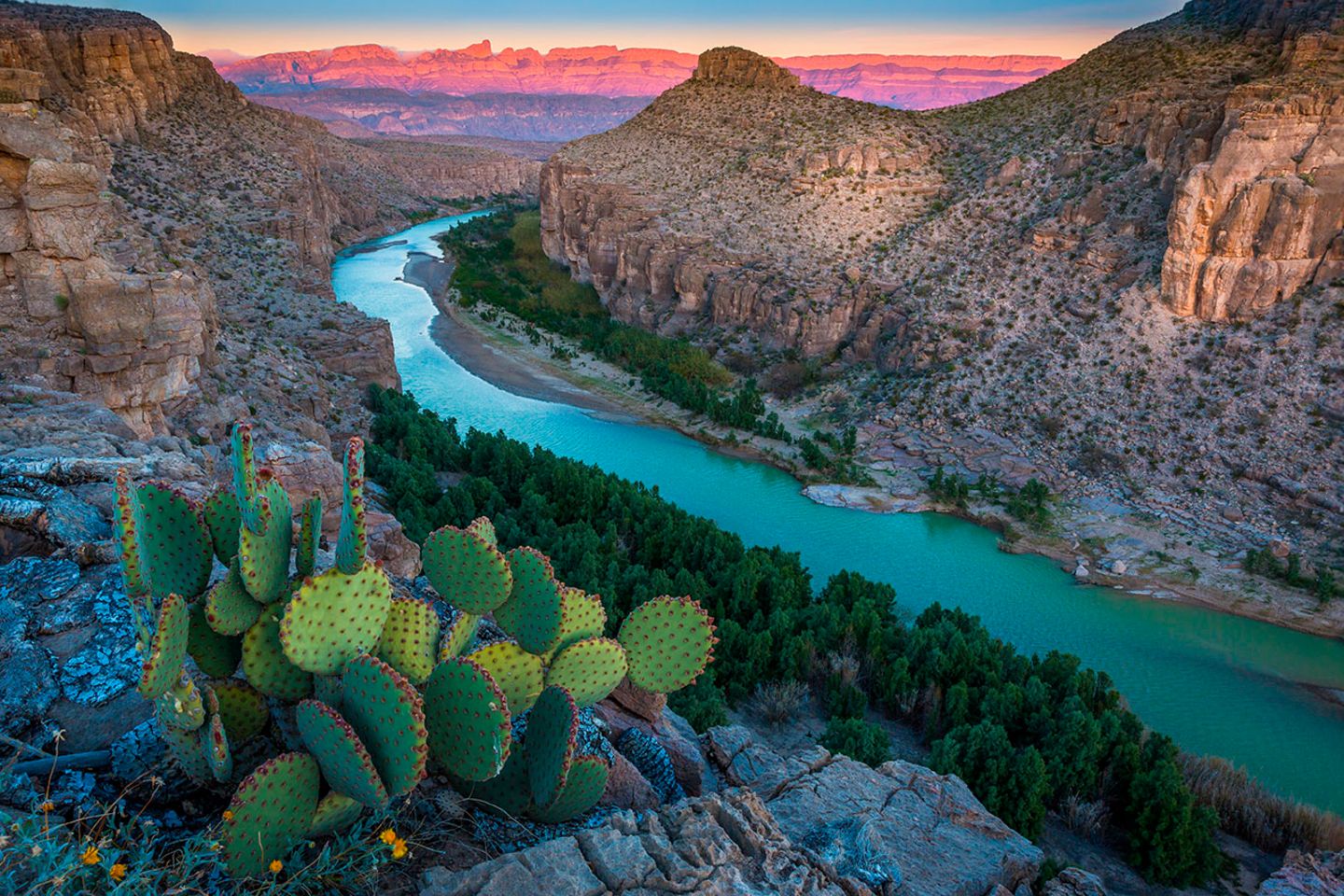
5. **Big Bend National Park**
Big Bend National Park, tucked away in the remote southwest corner of Texas, truly embodies the essence of an underrated gem. Norman Aynbinder, president and CEO of luxury tour operator Excursionist, succinctly captures its status, noting it is “underrated because of the location. . . . It’s definitely one of the harder parks to get to.” Yet, this very remoteness has preserved its rugged beauty and allowed it to remain a true hidden paradise, one that is absolutely worth the journey, regardless of the season. Unlike many parks with limited visiting windows, Big Bend welcomes exploration year-round, as Aynbinder points out.
What truly sets Big Bend apart is its astonishing biodiversity, making it one of the richest parks in the United States. It is a vibrant sanctuary to over 450 species of birds, 75 species of mammals, and 22 species of lizards, showcasing a remarkable array of life adapted to its varied environments. The park is a tapestry of three distinct and equally captivating landscapes: the majestic Chisos Mountains, the sprawling, arid Chihuahuan Desert, and the life-giving Rio Grande. This vast, rugged, and varied terrain offers countless ways to explore, from gentle strolls to strenuous treks.
Adventure awaits around every bend, literally. Visitors can embark on a hike to the park’s historic hot springs, a perfect way to relax after a day of exploration. For the more intrepid, a multi-day canoe trip down the Rio Grande offers a unique perspective of the border landscape, while bird-watching along the scenic 5.5-mile Window Trail provides opportunities to spot some of the park’s incredible avian residents. An insider tip that truly elevates a visit to Big Bend is to plan on staying into the night; it boasts the darkest skies in the lower 48 states and is recognized as an International Dark Sky Park, promising unparalleled stargazing.
**Where to stay near Big Bend National Park:** Big Bend offers fantastic opportunities for camping under a breathtaking blanket of stars. The park features three front-country campgrounds with amenities, and for the more adventurous, backcountry camping is permitted with a required permit. For those preferring more traditional accommodations, the small, artistic town of Marfa is about 90 minutes away and, as Aynbinder suggests, makes for a “great combination” as part of a West Texas road trip. Marfa offers unique stays like the bright and bohemian El Cosmico, featuring luxury safari tents and yurts.
Alternatively, consider hotels in the neighboring town of Lajitas or an eclectic vacation rental in nearby Marathon, providing comfortable bases from which to explore the park. A fun fact to ponder during your visit is that Big Bend National Park sits directly on the U.S.-Mexico border, adding another layer of unique geographical significance to its already captivating character.
Read more about: The Definitive Consumer Report: Unmasking the Vehicles and Manufacturers Plagued by the Most Recalls in Automotive History
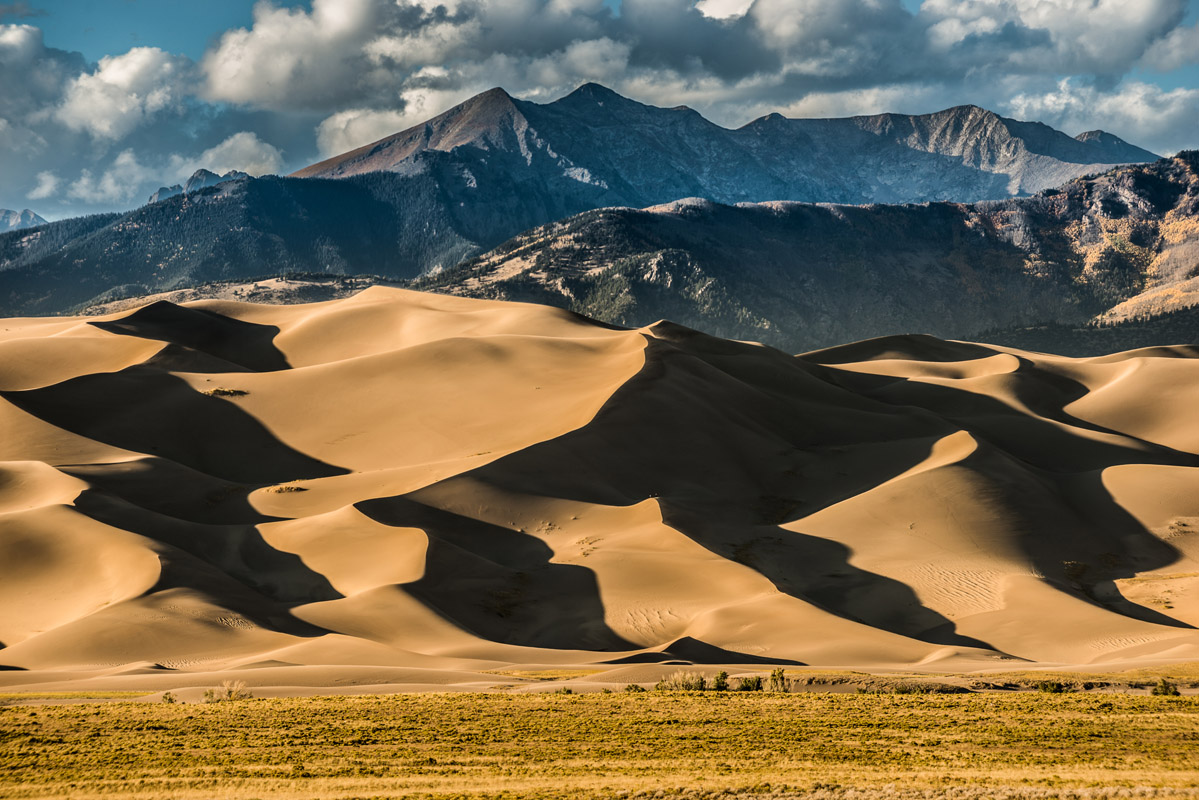
6. **Great Sand Dunes National Park**“
“One of my favorite [national parks] is . . . Great Sand Dunes National Park in southern Colorado,” shared Marty Behr of Abercrombie & Kent, a tour company founder and parks expert. True to its evocative name, this park is home to some of the tallest sand dunes in North America, a remarkable geological phenomenon formed by sand from southwestern deserts being relentlessly blown up against the imposing adjacent Rocky Mountains. This unique interplay of forces creates a truly extraordinary panorama, with towering sand dunes juxtaposed against majestic 14,000-foot peaks.
What makes Great Sand Dunes truly exceptional is its surprising ecological diversity, as Behr vividly describes: “It’s like three ecosystems in one—extraordinary and diverse.” Beyond the mesmerizing dunes, the park encompasses unexpected marshlands and wetlands, which host a huge variety of birds, creating a habitat rich with life in an otherwise arid region. This convergence of landscapes makes for a captivating study in contrasts, offering visitors a chance to experience multiple natural environments within a single park boundary.
While motorized vehicles are strictly prohibited on the dunes, the park offers a unique and exhilarating way to interact with its namesake feature. Visitors can undertake the challenging but rewarding climb up the towering dunes, some reaching 750 feet high, and then experience the thrill of sliding down on a disk. This activity, often described as sandboarding or sandsledding, provides a memorable and playful interaction with the colossal landscape, creating a sense of childlike wonder amidst the grandeur.
**How to visit:** Great Sand Dunes National Park is conveniently located roughly three hours from several major cities, including Colorado Springs to the northeast, Durango to the west, and Santa Fe to the south, making it an accessible destination for a road trip. Accommodation options directly near the park are somewhat limited, but within the park itself, Piñon Flats Campground offers sites (reservations recommended), along with several hike-in, backpacking campgrounds for a more rugged experience.
For those seeking a less rustic sleeping arrangement, Behr suggests considering options further afield. “Most of our [Abercrombie & Kent] guests either stay in Santa Fe or at Vermejo Ranch, a Ted Turner Reserve” in New Mexico. These choices offer more luxurious comforts while still allowing for day trips to the park, blending adventure with refinement for a comprehensive travel experience.
Read more about: When Vision Meets Reality: The Star Who Moved a Continent and Other Cinematic Location Legends
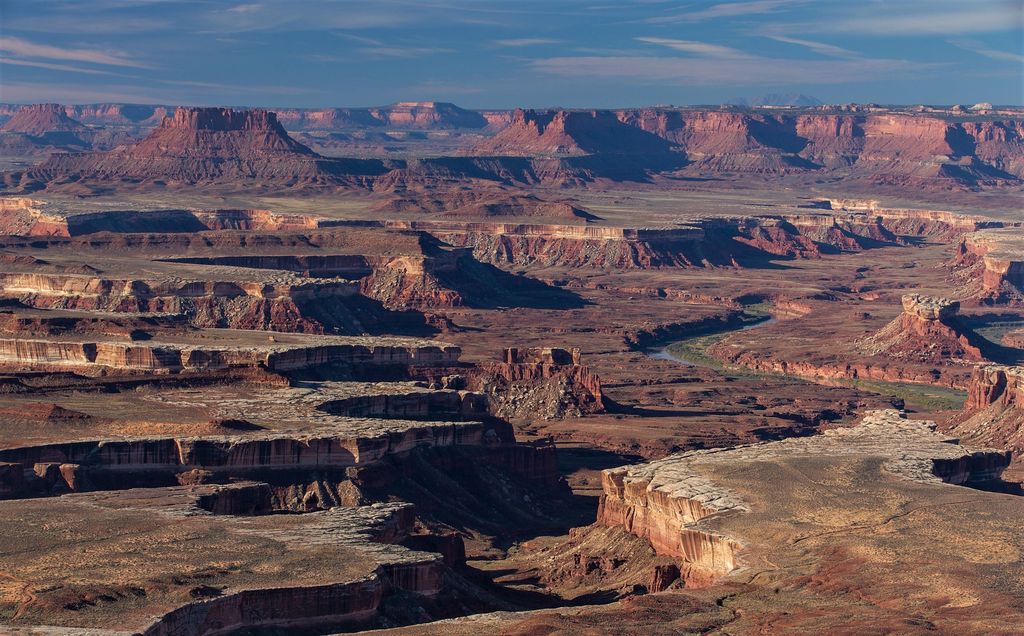
7. **Canyonlands National Park**
Despite its inclusion among Utah’s revered “Big 5” national parks, Canyonlands remains the least visited, a truly astonishing fact given its breathtaking landscapes and convenient proximity to the ever-popular Arches National Park and easy access from Moab. This colossal park spans approximately 338,000 acres, dwarfing Arches at about 77,000 acres, and offers a vastness that invites deep exploration and adventure. As Excursionist’s Aynbinder states, Canyonlands boasts “some of the best rafting, hiking, Jeep tours, and canyoneering,” making it a playground for outdoor enthusiasts. The park is also replete with the iconic slot canyons for which Utah is so famously known.
The Colorado River, a majestic artery, snakes its way through Canyonlands, providing a fantastic alternative to the often-crowded Grand Canyon for rafting trips. Aynbinder highlights this benefit: “The Grand Canyon rafting tours are hard because they’re crowded, booked up for years, but you can get just as stunning views in Canyonlands [and] with fewer people.” This offers an unparalleled opportunity to experience the thrill of whitewater rafting amidst dramatic scenery, often in greater solitude, enhancing the overall wilderness experience.
Canyonlands truly stands out with its multiple distinct districts—Island in the Sky, The Needles, The Maze, and the Green and Colorado Rivers—each offering unique scenery, activities, and access points. Island in the Sky provides sweeping vistas, accessible roadside viewpoints, and shorter hikes like the famous Mesa Arch. The Needles district is perfect for longer day hikes on stunning, uncrowded trails, such as the Chesler Park Loop or the Druid Arch Trail. For the ultimate backcountry camping and hiking challenge, The Maze district with its confusing canyons awaits. And for water sports lovers, the rivers offer everything from sunset boat cruises to exhilarating whitewater rafting.
**How to visit:** While visitors can certainly explore and camp in Canyonlands independently, opting for a tour can significantly enhance the experience, particularly for accessing harder-to-reach parts of the park. Companies like Excursionist organize trips that can take you deep into the wilderness with a 4×4 Land Cruiser, revealing hidden corners and spectacular vistas otherwise inaccessible. Whether you visit independently or with a guide, you’ll find Canyonlands open 24 hours a day, a crucial detail for those looking to experience its legendary dark night skies. Packing a blanket for stargazing is an insider tip not to be missed, as Canyonlands is stunning around the clock, with sunrise and sunset illuminating the bright red rocks, especially near Mesa Arch, and the dark skies revealing millions of stars.
For a touch of luxury amidst the rugged beauty, consider Ulum’s glamping property in Moab, strategically situated between Arches and Canyonlands. This upscale option offers complimentary programming, including yoga classes and watercolor painting sessions, blending outdoor adventure with comfort and creative pursuits. A fun fact for movie buffs: the iconic ending scene from ‘Thelma & Louise’ was filmed in Canyonlands, and ‘127 Hours’ depicts the true story of a rock climber who gets stuck in a slot canyon in The Maze and has to free himself, further cementing the park’s dramatic allure.
Read more about: Beyond the Grand Canyon: 14 Underrated National Parks You Need to Visit Right Now
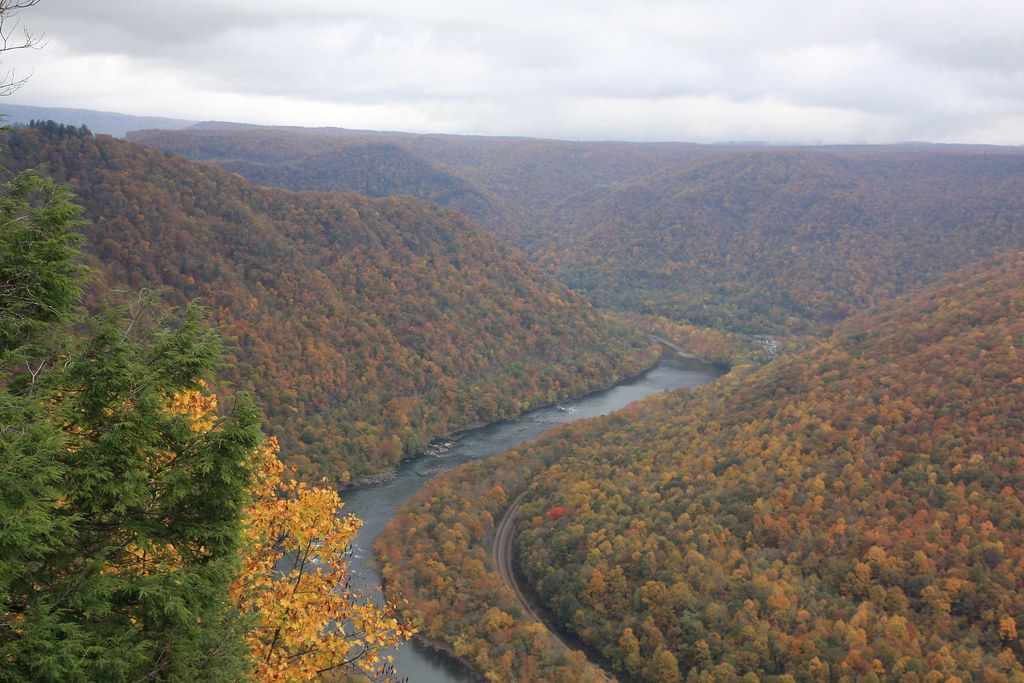
8. **New River Gorge National Park**
In early 2021, a significant transformation occurred in West Virginia’s natural landscape as the New River Gorge ascended from a national river to a full-fledged national park and preserve. This designation introduced America’s newest national park, a rugged Appalachian canyon spanning over 70,000 acres that quickly garnered attention from outdoor enthusiasts. Despite welcoming 1.8 million visitors in 2024, placing it as the 17th most visited park, it remains relatively new to the radars of many, offering fresh opportunities for exploration and adventure.
This vibrant park truly boasts something for every type of adventurer. For those with a passion for heights, the sandstone cliffs provide a multitude of rock-climbing routes suitable for all skill levels, from beginners to seasoned climbers seeking a challenge. Water-based thrills are abundant, with 53 miles of whitewater rapids on the New River, featuring formidable Class IV and V sections perfect for exhilarating rafting experiences. Additionally, a network of hundreds of miles of hiking and mountain-biking trails crisscrosses the park, inviting visitors to delve deep into its natural beauty on foot or by pedal.
Accessing this Appalachian gem is straightforward, with New River Gorge located just an hour’s drive from Charleston, West Virginia. For those wishing to extend their adventure, the park provides several campgrounds within its boundaries, offering a chance to stay immersed in nature. Beyond the park, privately owned campgrounds, like the cyclist-friendly Arrowhead Bike Farm, offer additional lodging solutions. For a more comfortable and cozy cabin-in-the-woods experience, the expansive, family-friendly adventure resort of Adventures on the Gorge, situated just outside the park, provides charming rental accommodations.
Read more about: What Your Neighbors REALLY Think About You If You Drive One of These 12 Minivan Stereotypes (Spoiler: It’s Not What You Expect!)

9. **North Cascades National Park**
Venturing to the Canadian border in Washington State, travelers discover North Cascades National Park, famously dubbed the “American Alps.” This stunning wilderness lives up to its name, presenting a dramatic panorama of cascading waterfalls, majestic high peaks, and awe-inspiring, snow-tipped mountains. The park’s rugged beauty is further enhanced by its more than 500 lakes and ponds, some of which beckon visitors to explore by boat, offering serene moments amidst breathtaking scenery.
Despite its undeniable splendor, North Cascades National Park remains an enigma to many, tallying only 16,485 visitors in 2024. This makes it the second least-visited U.S. national park, a statistic largely influenced by its seasonal accessibility. The main thoroughfare, State Highway 20, typically closes by October 1, limiting the park’s operational window primarily to the summer months. However, as Marty Behr of Abercrombie & Kent highlights, “When it’s open, people really go for spectacular hiking, but there is also whitewater rafting and horseback riding,” underscoring the exceptional quality of its seasonal offerings.
For those planning a summer visit, various camping options are available within North Cascades National Park itself, including convenient drive-in sites (reservations highly recommended), boat-in sites for unique water access, and backcountry options (requiring permits) for a truly immersive wilderness experience. Should a less rugged stay be preferred, Behr suggests the Sun Mountain Lodge in Winthrop. He describes it as “a beautiful property up on a hillside with gorgeous views, a rustic feel, and a good restaurant,” providing a comfortable and scenic base from which to explore the park’s magnificent surroundings.
Read more about: Rating 10 Full-Size Trucks Proved to Last Beyond 320,000 Kilometers

10. **Pinnacles National Park**
California, a state blessed with nine national parks, boasts more than any other, yet many remain unfamiliar with the striking allure of Pinnacles National Park. Located approximately 2.5 hours south of San Francisco, this lesser-known gem received only 0.38 percent of all national park visits in 2024. Despite its overlooked status, Pinnacles offers a remarkably unique landscape of towering rock spires and mysterious caves, forged by ancient volcanic eruptions, that rival the vast deserts of Joshua Tree and the impressive dunes of Death Valley in their geological wonder.
The park’s distinctive rock formations make it a celebrated destination for climbers, especially during the cooler months when the conditions are ideal for scaling its challenging surfaces. For those who prefer to keep their feet firmly on the ground, Pinnacles provides miles of well-maintained trails. These paths lead hikers past awe-inspiring rock formations, through intriguing lava tunnels, and up to mountain peaks that offer expansive scenic vistas. For visitors with just a single day, the Condor Gulch to High Peaks Loop trail comes highly recommended; it’s a challenging five- to six-mile circuit that plunges deep into the heart of the park’s iconic rock features.
When planning an overnight stay, the Pinnacles Campground, situated on the east side of the park, is the primary and best option, offering convenient access to many trails. While hotels and Airbnbs are sparse in the immediate vicinity, the park is easily enjoyed as a day trip from charming coastal towns like Monterey or Carmel Valley, or from the bustling city of San Jose. A crucial piece of advice for visitors is to meticulously plan your route, as the east and west entrances of the park are connected solely by hiking trails, not by road, meaning you cannot drive through the park to reach the opposing access point.
Read more about: Teri Garr, Celebrated Comic Actress of ‘Young Frankenstein’ and ‘Tootsie,’ Dies at 79: Remembering a Life of Laughter and Resilience
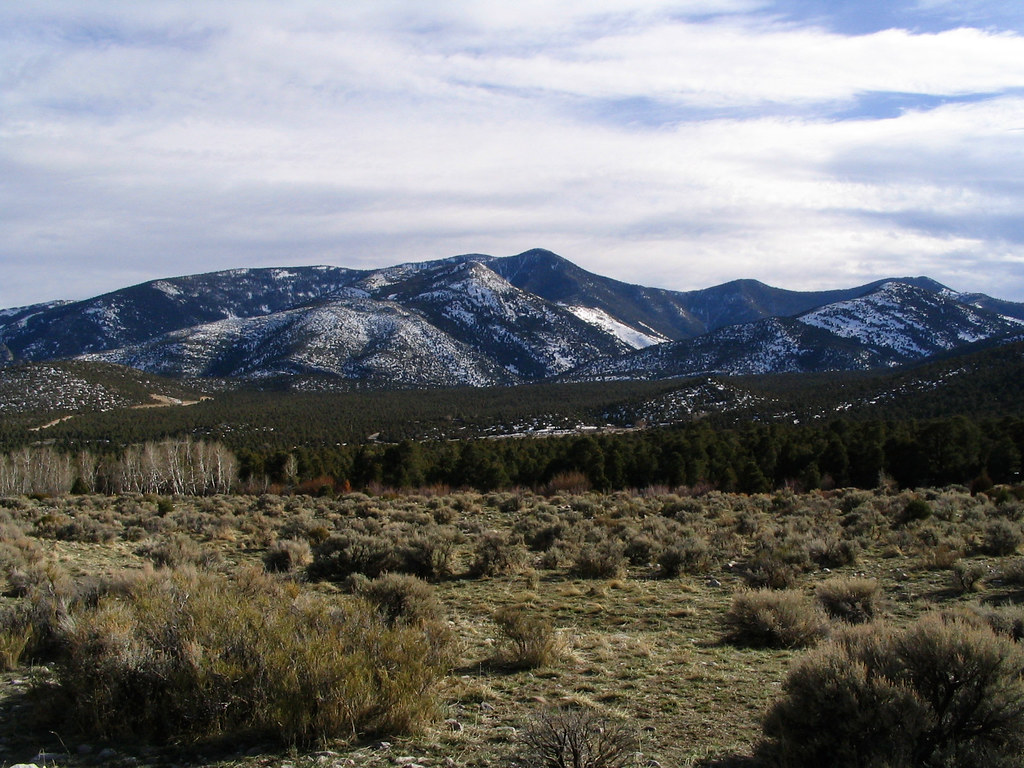
11. **Great Basin National Park**
Nestled in Nevada, Great Basin National Park holds a surprising secret: it’s home to the Wheeler Peak Glacier, a rare glacial remnant tucked beneath the imposing 13,063-foot Wheeler Peak. This remarkable park invites visitors to wander among some of the oldest living organisms on Earth, the ancient bristlecone pines, and to marvel at one of the darkest night skies in the entire country, a stargazer’s paradise. However, for many, the true highlight of a visit to Great Basin lies beneath the surface, in its captivating underground world.
The park boasts an extensive and intricate limestone caving system, famously known as Lehman Caves. Within these depths, a breathtaking display of stalactites and stalagmites twists and shimmers, creating an otherworldly subterranean landscape. To experience the full splendor of Lehman Caves, visitors must embark on a ranger-led tour, which lasts approximately 90 minutes and is offered multiple times throughout the day, providing insightful commentary on the cave’s geological formations and history.
Reaching Great Basin typically involves a drive of about four hours from Salt Lake City or five hours from Las Vegas. Due to its remote nature, the National Park Service strongly advises downloading a park map onto your phone before arrival, as cell phone coverage within Great Basin is minimal to non-existent. Beyond the designated campgrounds inside the park, accommodation options near Great Basin include a small selection of Airbnbs in the nearby town of Baker, Nevada, as well as cozy motels such as the Stargazer Inn and Hidden Canyon Retreat, offering comfortable respite after a day of exploring both above and below ground.
Read more about: California’s Evolving Landscape: A Deep Dive into the State’s Economic Drivers, Environmental Stewardship, and Capacity for Progressive Local Governance
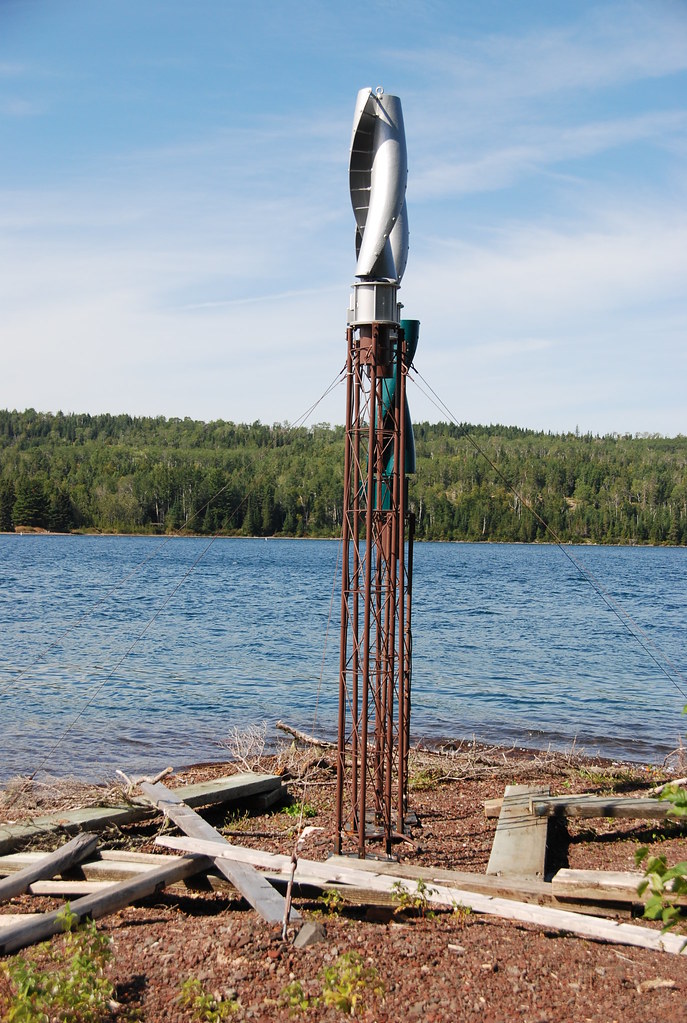
12. **Isle Royale National Park**
For a truly unique and isolated wilderness experience, look no further than Isle Royale National Park, a collection of roughly 400 islands nestled in the northwestern corner of Lake Superior, close to the Canadian border. What sets this park apart is its steadfast commitment to natural preservation: all exploration is conducted entirely by boat or on foot, as cars are strictly prohibited. This car-free environment fosters an unparalleled sense of tranquility and immersion in nature, encouraging visitors to embrace a slower pace of discovery.
Adventurers have the option to bring their own watercraft or rent a canoe from either Rock Harbor or Windigo, the park’s main entry points. Among the most popular paddling routes is the challenging yet incredibly rewarding Chain of Lakes trail, which requires a fair amount of portaging but compensates with jaw-dropping views of secluded lakes and ancient old-growth forests. Beyond surface exploration, Isle Royale is also a prime destination for freshwater scuba diving, offering a fascinating glimpse into the depths of Lake Superior where numerous shipwrecks lie preserved, waiting to be explored by certified divers.
Accessing Isle Royale requires thoughtful planning, as it is only reachable by seaplane, ferry, or private boat due to its island location in Lake Superior. The park operates seasonally, welcoming visitors from mid-April to the end of October. For accommodations, the Rock Harbor Lodge offers 60 comfortable rooms situated on the northeastern edge of Isle Royale. Guests can choose between private rooms within the main lodge or a variety of charming cabins scattered across the property. The lodge staff are also on hand to assist guests in arranging water taxis, sightseeing tours, and fishing charters, ensuring a comprehensive and memorable visit to this remote island paradise.
Read more about: Your Guide to Military-Grade Gear: 16 Indispensable Surplus Items Civilians Can Purchase
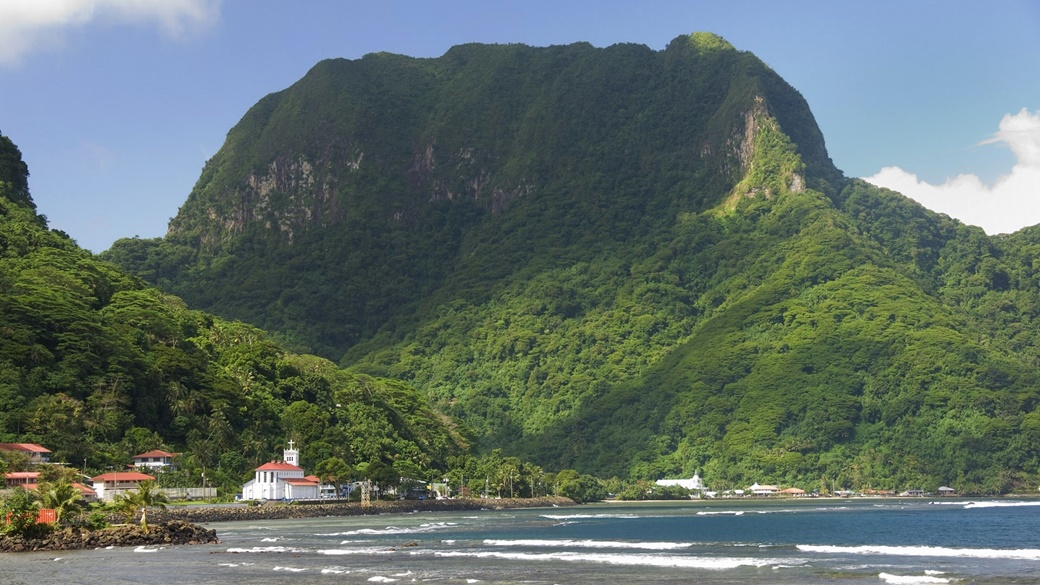
13. **National Park of American Samoa**
Representing the pinnacle of remote exploration within the U.S. national park system, the National Park of American Samoa is arguably the most challenging to reach. Spanning three pristine islands in the South Pacific—Tutuila, Ta’ū, and Ofu—it lies some 2,600 miles southwest of Hawai‘i, holding the unique distinction of being the only U.S. national park situated south of the equator. This extraordinary distance, however, rewards the intrepid traveler with an untouched paradise where vibrant ecosystems flourish in splendid isolation.
Upon arrival, visitors are greeted by a breathtaking confluence of natural wonders: crystal-clear waters teeming with an astonishing diversity of marine life, including roughly 1,000 different species of fish, meeting pristine white-sand beaches. These idyllic shores are backed by lush, jungle-covered mountains, creating a dramatic and picturesque landscape. The most popular ways to experience the park’s beauty are through snorkeling in its vibrant coral reefs, relaxing on its tranquil beaches, or embarking on one of the many hiking trails that wind through its verdant interior, offering panoramic views and opportunities for wildlife spotting.
Currently, Hawaiian Airlines is the sole carrier providing flights to American Samoa from Honolulu, serving as the primary gateway for international visitors. Once on the islands, travelers can rent a car or utilize public transportation to reach different sections of the park. It’s important to note that camping is prohibited within the National Park of American Samoa, so visitors must secure lodging elsewhere. For those seeking luxurious comfort amidst the tropical splendor, high-end resort options such as Taumeasina Island Resort and Sinalei Reef Resort & Spa offer reliable and exquisite accommodations, ensuring a relaxing stay after days of island adventure.
Read more about: America’s Unfolding Story: A Deep Dive into the Foundational Shifts and Enduring Legacies That Reshape a Nation
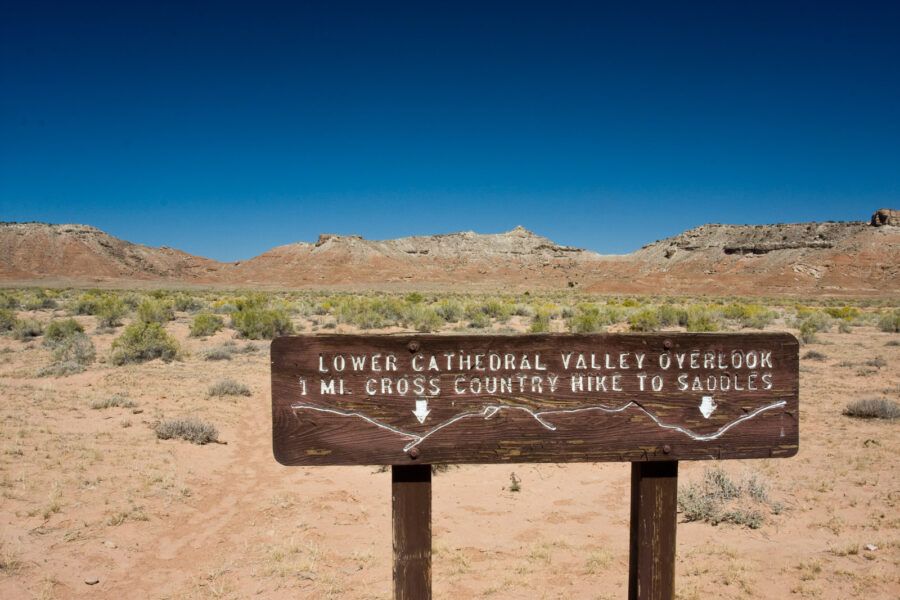
14. **Capitol Reef National Park**
Utah, a state celebrated for its iconic national parks, also harbors Capitol Reef National Park, an extremely underrated yet absolutely spectacular destination. Tucked into the southern part of the state, this geological wonder sits just two hours from both Bryce Canyon National Park and the off-roading mecca of Moab, making it surprisingly accessible despite being largely overlooked. With less than one million visitors in an average year, it offers a stark contrast to the half-million who flock to Zion National Park in just a single month, promising a more serene encounter with nature’s grandeur.
The massive, awe-inspiring rock formations are undoubtedly the stars of the show at Capitol Reef, complemented by an array of exceptional hiking opportunities. Visitors should not miss the chance to explore trails leading to Hickman Bridge, Chimney Rock, and Cassidy Arch, each offering unique perspectives of the park’s dramatic scenery. Here, you’ll encounter natural arches, towering monoliths, and steep canyons—everything one imagines when thinking of Utah’s renowned landscapes. The park’s main distinguishing feature, the Waterpocket Fold, adds another layer of geological marvel.
This incredible monocline, a very literal wrinkle in the earth’s surface, spans nearly 100 miles and dramatically towers almost 7,000 feet above the valley in certain areas. This scar-like geological phenomenon is so immense it is easily discernible from space, a testament to the powerful forces that shaped this region. For those embarking on a journey to Capitol Reef, a mini road trip to Bryce Canyon and Grand Staircase-Escalante National Monument comes highly recommended, with Lower Calf Creek Falls in Grand Staircase being an essential stop if time is limited.
An insider’s tip that enriches any visit is to explore the tiny pioneer settlement of Fruita. Today, park employees reside there, but visitors can step back in time by visiting the historic one-room schoolhouse and, perhaps most delightfully, pick their own fresh fruit from the orchards. For a nominal fee of $1 a pound, you can bring home a bounty of fresh apples, pears, cherries, walnuts, and peaches, offering a sweet taste of history and local flavor.
Adding a touch of trivia, despite its status as one of the most underrated national parks, Capitol Reef earned its name from two highly recognizable landmarks. The term “Capitol” refers to the majestic white Navajo sandstone domes that strikingly resemble the U.S. Capitol building, while “Reef” describes the rugged, impassable terrain that visually evokes a coral reef. For overnight stays, the Fruita Campground is a lovely option with 71 sites equipped with grills, picnic tables, and running water. Alternatively, for luxury family-friendly accommodations nearby, consider The Lodge at Red River Ranch in Teasdale.
Read more about: Strategic Foundations: Understanding the U.S. Military’s Global Power and Operational Framework
As our journey through America’s most underrated national parks concludes, it’s clear that the call of the wild extends far beyond the familiar, well-trodden paths. These remarkable destinations, from Alaska’s colossal ice fields to the South Pacific’s vibrant marine sanctuaries, and from the towering dunes of Colorado to the hidden caves of Nevada, offer a profound opportunity for authentic exploration and a deeper connection with nature. They promise breathtaking landscapes, unique ecological wonders, and the cherished solitude that overtourism often diminishes. So, for your next adventure, consider swapping the crowds for quiet canyons, popular peaks for pristine island shores, and iconic views for undiscovered vistas. The U.S. National Park System is a treasure trove of wonder, and sometimes, the greatest discoveries are found where the fewest people venture.



